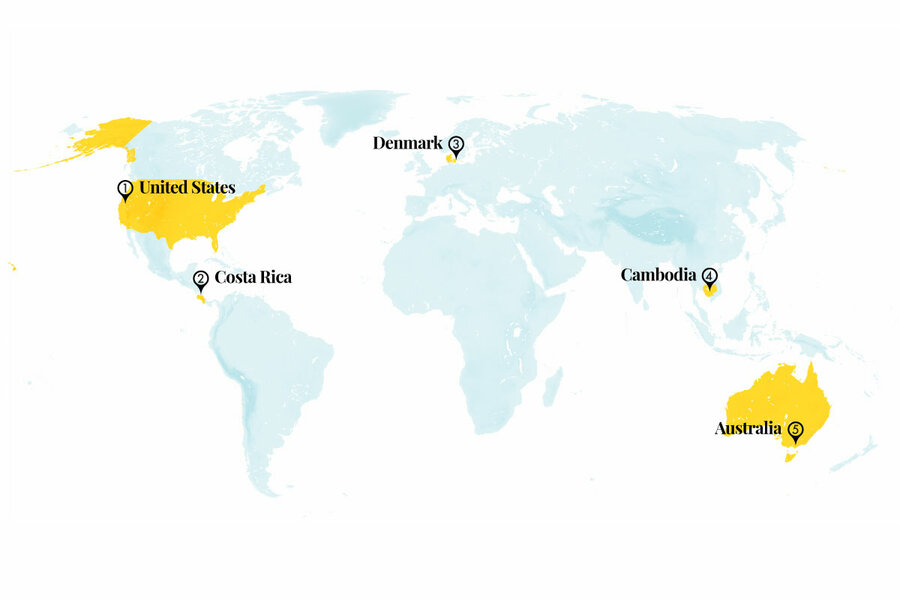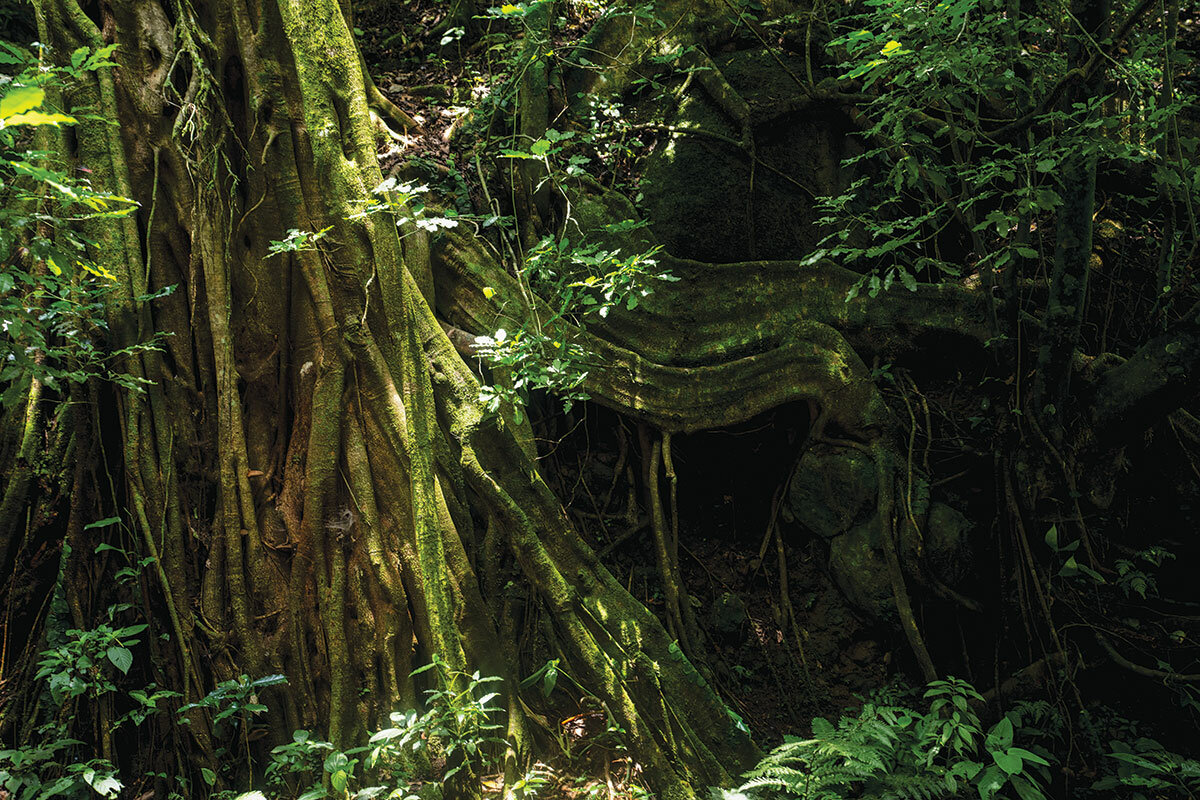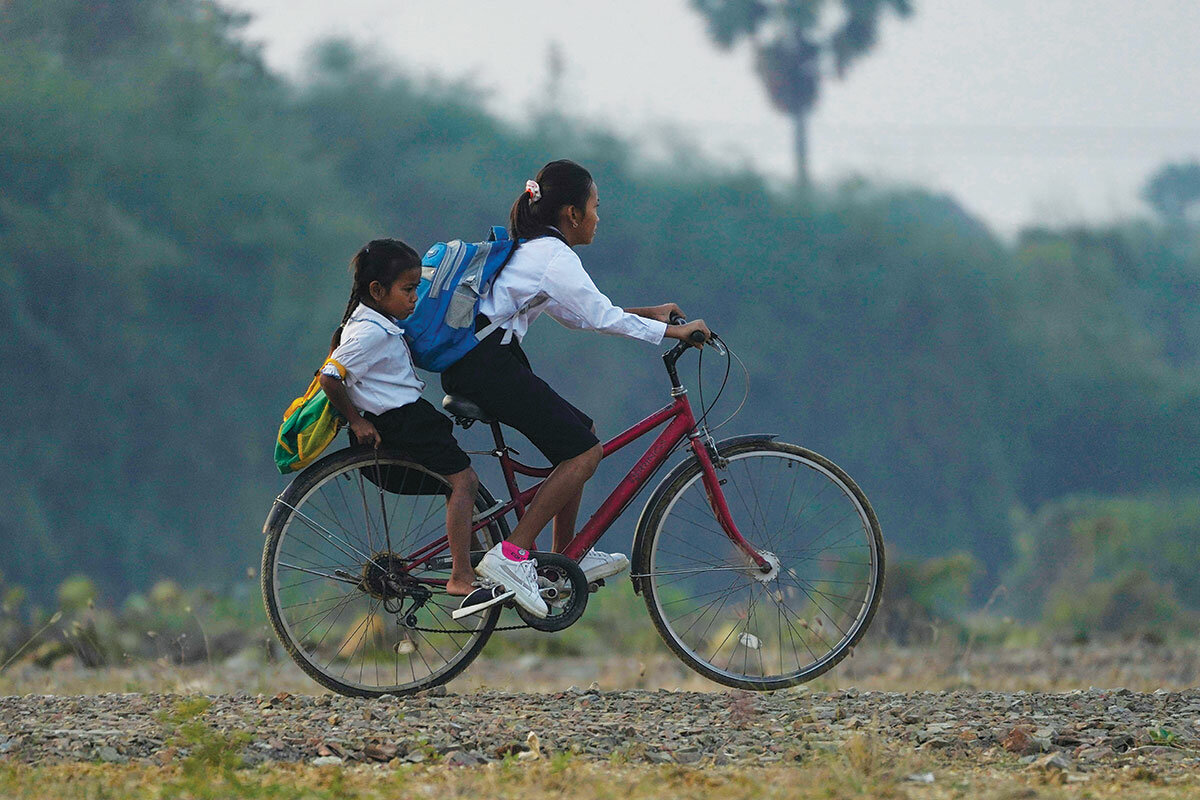Schooling the teachers, from California to Cambodia
Loading...
1. United States
San Francisco’s Pipeline for Black Early Childhood Educators is training future teachers to help ensure the success of young Black learners. A recent survey by the city’s school district found that only 44% of Black children were ready for kindergarten, compared with nearly 70% of white children and 68% of Asian American children. The pipeline provides wraparound supports for trainees to help them finish the program and earn a teaching permit.
Research shows that Black students who have just one Black teacher in K-3 are more likely to finish high school and enroll in college, but low pay can make it difficult to attract and retain potential educators. The 10-month program includes a $10,000 stipend, free laptops, flexible class schedules, and check-ins with a case manager.
Why We Wrote This
A story focused onIn our progress roundup, supporting people who want to teach, as well as those already educating children, yields more job satisfaction and adds new professionals to the field.
Though the first year of the initiative struggled to retain candidates, additional help such as free child care and transportation to classes helped raise the number of graduates in 2023 to 39 out of 40. Over the course of both years, 62 out of 80 students went on to teach in classrooms, start their own child care businesses, or pursue higher degrees. Initially diverting $1.6 million a year from the police budget for the program, the city recently approved another two years of funding for the pipeline.
Source: KQED
2. Costa Rica
Scientists conducted the first in-depth study of canopy soil abundance and composition. Taking as long as a century to grow and mature, canopy soils are the result of fallen leaves, airborne particles, and moisture that accumulates in the crevices of old-growth trees, particularly in cool and foggy tropical rainforests. Though the soil creates vibrant ecosystems, researchers have longed to understand how they form and what biodiversity they might support.
To examine canopy soils, Jessica Murray of Utah State University scaled trees at six forest sites in Costa Rica, including some of the surrounding region’s last untouched forests. Some high-altitude hikes lasted for days when the team nearly ran out of food. Climbing up some 80 feet, Ms. Murray uncovered vast diversity in soil composition – even in adjacent samples – revealing miniature ecosystems with abundant plant and invertebrate life that can support larger animals such as birds. Researchers believe that such biodiversity could also mean canopy soils are strong carbon sinks, a potentially critical piece missing from carbon budgets.
Canopy soils remain threatened by logging and climate change, and cannot be easily replaced through reforestation efforts. Next, the team hopes to develop methods, such as remote sensing, that would measure the amount of canopy soil in a particular location.
Sources: Utah State University, Imperial College London, Geoderma
3. Denmark
Copenhagen is re-imagining its public spaces as a “metropolis for people,” prioritizing sustainable and varied experiences that encourage playing and socializing. The project began in 2009 to create a city flush with green and blue spaces, as well as places for adults and children to be physically active. Research has shown that such urban planning is associated with better health and well-being. The city hopes that everyone “irrespective of age, social status, ethnic background, finances, or handicap” can participate in an environment where the “eccentric” idea can flourish.
One such urban space is CopenHill, a municipal waste-to-energy plant that doubles as a 1,300-foot green ski slope, hiking trail, and climbing wall. Similar projects include Superkilen park – a multifunctional space awash with vibrant splashes of art and found objects from around the world representing the 60 nationalities of its residents.
Copenhagen consistently ranks highly among cities for quality of life and resident happiness. Though the mayor announced a year ago that Copenhagen will fail to reach its goal to become carbon-neutral by 2025, the city says that since 2009 it has reduced emissions by 80%.
Sources: Politico, Themayor.EU, ArchDaily
4. Cambodia
Cambodia improved education for over 453,000 students, half of them girls. In 2015, more than 60% of Cambodian children between the ages of 12 and 14 were not in school. Classroom and teacher shortages meant that only 10% of 15-year-olds met United Nations sustainable development goals in math proficiency, and even fewer met them in reading. Between 2017 and 2022, the Secondary Education Improvement Project funneled $41.4 million – mostly from the World Bank – to implement a community-focused model that encourages active parent participation and provides teacher training to improve outcomes for seventh to ninth graders.
Teachers employed discussion-based classes to improve teacher-student relationships. The project encouraged educators to consider how conditions at a student’s home, such as poverty and abuse, affect learning. Principals and teachers visited the homes of students who were often absent. Locals financed regular testing to identify students who needed extra support and raises for teachers. To build trust between the school and community, students themselves recorded teachers’ hours and attendance performance in a weekly report to their school.
“I questioned why after spending more than 30 years teaching, student learning outcomes still didn’t improve much,” Mok Bora, a high school principal, said. “Now ... schools, communities, and local authorities can sit down together and arrive at our own decisions.”
Source: World Bank
5. Australia
A study of urban greening initiatives in Melbourne showed that even small actions can have an outsize, positive ecological effect. While green spaces are known to reduce urban heating, lower air pollution, and improve human health, scientists sought to beef up scant empirical data on the potential for urban greenery to mitigate over time urbanization’s deleterious effects on animal and insect species.
After measuring the number of insects in a small, 195-square-meter (2,099-square-foot) plot adjacent to a major roadway, scientists at the University of Melbourne planted 12 indigenous plant species. They then took surveys of the insect population over three years.
Though only nine of the original plant species remained at the study’s end, researchers recorded 94 insect species – 7.3 times as many as when the project began. The team also found numerous predator and parasitoid insects, which help regulate pest insects and are strong indicators of a robust insect ecosystem.
Luis Mata, who led the study, said he hopes the findings will encourage gardeners to grow native plants. “This could help provide the evidence that ... no matter how small your intervention, you’re going to derive a good positive ecological outcome,” he said.
Sources: The Guardian, Ecological Solutions and Evidence










